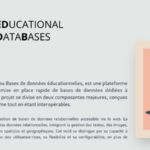Les grilles d’évaluation critériées, pas si simples…
Actuellement, les institutions d’enseignement tertiaire travaillent pour inclure à leurs programmes l’apprentissage de compétences complexes, en particulier tout le groupe des compétences que l’on peut dénommer les « 21st Century skills » (Information literacy, ICT literacy, soft skills, etc.) et les outils d’évaluation de telles compétences complexes deviennent ainsi très importants (Voogt et Roblin, 2012).
La grille d’évaluation critériée (dénommées « rubric » en anglais) semble pouvoir jouer ici un rôle crucial, dans le monde de l’enseignement supérieur, comme le montrent de nombreux articles scientifiques.
Elle a un véritable potentiel comme outil d’évaluation de tâches complexes : « In some contexts, they [the rubrics] provide a superior alternative to testing because they allow for objective, « authentic » assessment of student work. Rubrics make clear to students the expectations of their instructors, and provide consistent and transparent performance criteria » (Lowe et al, 2015, p. 492). De plus, leur structure très simple devrait faciliter leur écriture : « A rubric is a tool that is set up as a matrix in which the rows contain the various elements of an assignment and the columns provide the scoring criteria. » (Anderson et Mohrweis, 2008, p. 85).
Soulignons qu’on commence également à bien comprendre les fondamentaux de ces « rubrics » :
- comment les construire : « Rubrics that include descriptions of quality on criteria that reflect learning goals, however, confer benefits that simple rating scales or point schemes cannot; they function as the goals toward which students can monitor their progress. » (Brookhart et Chen, 2015, p. 365) ;
- et comment les utiliser pour améliorer l’apprentissage des étudiants : « Findings also showed that students who used the rubric to provide feedback on a classmate’s paper significantly improved the quality of their own paper when given the chance to rewrite it. Importantly, this improvement was evident in all sections of the report, not just those that are relatively easy to write. » (Greenberg, 2015, p. 215)
La littérature nous fait noter toutefois que définir des règles d’écriture ayant la cohérence souhaitée pour ces grilles n’est pas forcément si simple : « In rubrics, performance indicators on different levels of mastering a skill (e.g., novice, practiced, advanced, talented) are described. However, the dimensions used to describe the different mastery levels vary within and across rubrics and are in many cases not consistent, concise and often trivial, thereby hampering the quality of rubrics used to learn and assess complex skills. » (Rusman et Dirkx, 2017, p. 1).
Ce que nous avons remarqué nous-mêmes est que les éléments descriptifs des compétences à évaluer (le contenu des lignes) se mélangent facilement avec les éléments définissant les éléments définissant les critères d’évaluation eux-mêmes (le contenu des colonnes). Nous travaillons actuellement sur cette problématique. Sans doute un autre billet de blog à venir bientôt à ce sujet…
Bibliographie
Anderson, J. S., & Mohrweis, L. C. (2008). Using Rubrics to Assess Accounting Students’ Writing, Oral Presentations, and Ethics Skills. Journal of Business Education, 1(2), 85–94.
Brookhart, S. M., & Chen, F. (2015). The quality and effectiveness of descriptive rubrics. Educational Review, 67(3), 343–368. https://doi.org/10.1080/00131911.2014.929565
Greenberg, K. P. (2015). Rubric Use in Formative Assessment: A Detailed Behavioral Rubric Helps Students Improve Their Scientific Writing Skills. Teaching of Psychology, 42(3), 211–217. https://doi.org/10.1177/0098628315587618
Lowe, M. S., Booth, C., Stone, S., & Tagge, N. (2015). Impacting Information Literacy Learning in First-Year Seminars: A Rubric-Based Evaluation. Portal-Libraries and the Academy, 15(3), 489–512. https://doi.org/10.1353/pla.2015.0030
Rusman, E., & Dirkx, K. (2017). Developing Rubrics to Assess Complex (Generic) Skills in the Classroom: How to Distinguish Skills’ Mastery Levels? Practical Assessment, Research & Evaluation, 22(12). Retrieved from http://pareonline.net/getvn.asp?v=22&n=12
Voogt, J., & Roblin, N. P. (2012). A comparative analysis of international frameworks for 21st century competences: Implications for national curriculum policies. Journal of Curriculum Studies, 44(3), 299–321. https://doi.org/10.1080/00220272.2012.668938
Photo by patricia serna on Unsplash





